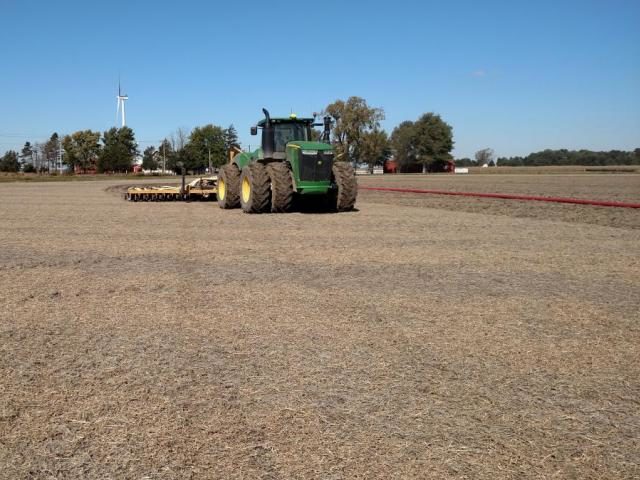Last fall was not favorable for manure application to farm fields. Thus, many producers are interested in spring application with an eye on capturing the nitrogen contained in the manure to reduce the need for purchased nitrogen.
In-crop applications of manure make the best use of the manure’s nitrogen content for crop uptake. At the early vegetative stages, the timing is close to the crop’s maximum nutrient uptake period. In corn, placement of the manure below the surface preserves a higher percentage of nitrogen through reductions in volatilization losses. When used as a substitute for purchased nitrogen fertilizer, the economic case for manure used in this way is very attractive and provides an incentive to haul manure greater distances.
Preplant applications of manure can work almost as well as in-crop manure application. The challenge is to get the manure incorporated, to capture the nitrogen, without delaying spring planting due to the field being too wet or the field made too rough for planting. An acre-inch of water is 27,154 gallons. Applying 7,000 gallons in the spring is like adding a quarter inch of moisture if spread evenly. If the manure is applied in strips, then the field could take longer to dry.
The Ohio State University conducted five years of research on preemergent manure application. The manure application was made after corn had been planted the previous day. Yield results were significantly higher than commercial fertilizer applied at the same time. Based on fall stalk-nitrate tests, the manure appears to stay with the growing corn crop much longer than the commercial fertilizer. This should give farmers confidence that spring applied manure can provide the nitrogen needed by the corn crop over the entire growing season.
The key is to apply the needed nitrogen and get the manure below the soil surface. Most swine finishing buildings contain from 30 to 40 pounds of ammonium nitrogen per 1,000 gallons. But there are exceptions to this guide so be sure to rely on previous manure tests. Dairy manure would be much lower at eight to 15 pounds per 1,000 gallons. Research also shows that some agitation of the manure source prior to application will produce more consistency of the nitrogen, phosphorus, and potash over the course of emptying the manure storage.
Another key is to do your best to avoid soil compaction. Manure tankers are heavy and soil compaction can be seen throughout the growing season and on combine monitors during the harvest season. This would be a good reason to favor using a drag hose for spring manure application if possible.
If a producer gets the manure application made, then the producer could utilize a Pre-Side-dress Nitrate Test (PSNT) to determine if additional side-dress nitrogen is needed or utilize tissue testing and Y-drop nozzles to determine if additional nitrogen is warranted.
The application of manure to corn focuses on the 4R’s of nutrient stewardship. These are the right product, the right rate, right placement, and right timing to maximize crop yield and minimize environmental impacts.







Post a comment
Report Abusive Comment